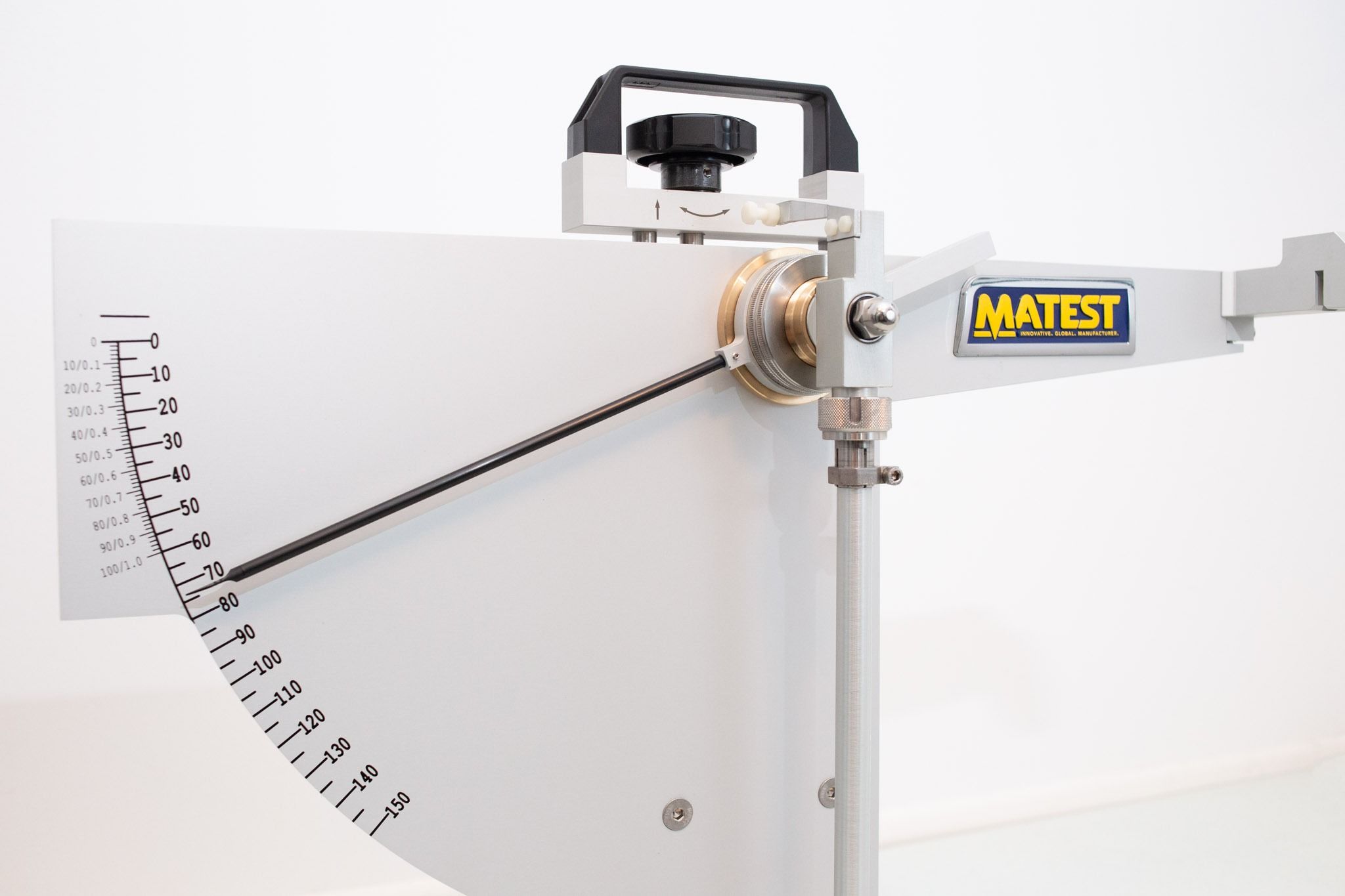Until recently, the most popular method for determining slip resistance was the DIN 51130 ramp method classifying flooring material on a scale of R9 - R13. Since the change in Polish regulations in 2018 and the adoption of British standards, the more universal British Pendulum Test method is gaining popularity. In this post, we will explain the difference between the two classifications.
What is the Pendulum Test - DIN 51130?
The ramp test, as the name suggests, is based on testing the anti-slip properties on a special test ramp.
The inspector, standing on the ramp in special shoes, walks forward and backward on a sample of floor material that has been evenly coated with oil. The test begins with the ramp in a horizontal position; the operator gradually increases the angle until the limit of safe walking is reached and the controller "slips." The resulting acceptance angle is used to express the degree of slip resistance (the "R" value). This test is performed only under laboratory conditions.
Ramp test results are graded on a scale from R9 to R13, with R13 indicating the highest slip resistance (the largest ramp angle without slipping). The R9 category has minimal slip resistance, while R13 is suitable for facilities...
The ramp test says nothing about the durability of slip resistance. Some floors can lose their wet slip resistance within a few weeks under heavy use. In addition, according to ITB, given the test methodology (test of a sample coated with motor oil), the test may not be appropriate for non-manufacturing facilities.
What is a pendulum and the "British pendulum" test?
This test is performed with a portable pendulum device. The apparatus imitates a pedestrian's foot striking the tested floor surface. The friction value between the heel and the floor is quantified and a pendulum test value (PTV) is assigned. Pendulum test values range from 19 (which translates into a very high slip risk of 1:2) to 36 (which means a much lower slip risk of 1: one million). This test can be performed both in laboratory conditions and on the floor laid in the facility. That's why, in 2018, the Building Research Institute adopted the British pendulum test as the benchmark for anti-slip testing.

Benefits and Disadvantages of Ramp Test:
- Ramp test can evaluate a specific sole, heel material or tread pattern and can be used on different types of floors.
- Interpreting the R-value is not straightforward. Each R-value contains a range of possible results, making it difficult to determine how slippery a floor actually is.
- Ramp Test is based on a laboratory test and cannot be performed in situ on an already installed floor.
- Performed only for a wet, contaminated surface
- Ramp Test says nothing about the durability of slip resistance. Some floors can lose their wet slip resistance within a few weeks with heavy use.
Benefits and drawbacks of the British pendulum test - pendulum test:
- Can provide results in both wet and dry conditions
- Can be used in the laboratory and on site.
- Can be used to test small samples.
- Can be used to evaluate slip resistance properties after time of use
- Can simulate shoe sole or barefoot
- Method recommended by the Institute of Construction Technology and the Ministry
- The testing process can be time-consuming

Summary:
Ramp Test is a large, fixed device designed for use exclusively in the laboratory. It is used to evaluate how different types of floor surfaces behave with different types of footwear. However, due to its size, the test can only be performed before the floor is laid.
The shuttle tester is portable, meaning tests can be performed on-site without removing the sample. It also provides a more accurate picture of the actual risk of slippage. The pendulum can also be used by tile and flooring companies for quick and easy internal product testing. This can help with research and development work and offer better recommendations to customers.
Overall, the pendulum seems to be a much more cost-effective option. Due to the size of the Ramp Test, the need for trained operators and the stringent laboratory conditions, ramp tests are much more expensive. Ramp tests are also a faster option, meaning they are ideal for situations where results are needed quickly.

